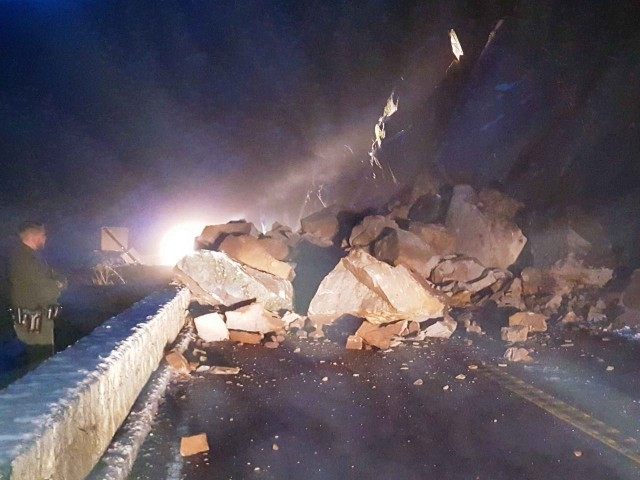A second day of powerful storms unleashed by El Niño brought flooding, power outages and heavy snowfall to drought-ravaged California.
After Tuesday’s storms brought localized flooding, mudslides, road closures and high surf to areas across the state, a repeat of the tempestuous weather on Wednesday added significant power outages, beefed-up snowfall totals and created enough runoff to send the Los Angeles River surging back to life after years of dormancy.
In San Diego, police and residents posted photos and videos to social media highlighting the severity of widespread flooding. Reports of submerged cars, floating trash cans and road closures lit up Twitter, as authorities urged area drivers to remain cautious when hitting the roads.
Ugly. Parking garage submerged in Kearny Mesa, sent in by @10news photojournalist Maxwell Gardiner #SanDiego #CaWx pic.twitter.com/EEq0YnI8iF
— Michael Chen (@10NewsChen) January 6, 2016
Trash cans floating down street in Oceanside. #10News Courtesy Risa Broyer pic.twitter.com/cZ70U7dRLk
— Emily Valdez (@10NewsValdez) January 6, 2016
Rain flooding shops along Newport Ave in Ocean Beach #SanDiego @10news #CaWx #ElNino pic.twitter.com/792cyCkChv
— Michael Chen (@10NewsChen) January 6, 2016
The National Weather Service had issued a tornado warning for San Diego County on Wednesday afternoon, and was investigating reports on Thursday that a small tornado had touched down in Vernon.
More than 8,000 people were left without power Thursday in Big Bear Lake, where some areas have seen more than two feet of snow in just the last three days, according to the Los Angeles Times. Also out of power was the San Luis Obispo Airport, which lost its runway and taxiway lights when a series of lightning strikes hit the airport’s central tower. Nighttime arrivals and departures out of the small airport have been delayed until further notice.
Meanwhile, further south, the Los Angeles County Department of Public Health issued a health advisory for all county beaches through Friday morning, the Times reported.
“By far the big headline today will be the surf, [with] 10- to 15-foot sets over west-facing beaches in L.A. and Ventura counties,” National Weather Service meteorologist Curt Kaplan told the paper. “It’s going to be very strong. With some winds, it could cause erosion.”
On Wednesday, NWS had issued a high surf advisory for beaches in Humboldt County, warning of waves as high as 24 feet.
In Newhall, a mobile home park was evacuated due to significant mud and debris flows, while voluntary evacuation orders were issued for some low-lying and burn areas, like Orange County’s Silverado Canyon.
“I’m not a church-going person, but it was meant for a reason,” Santa Clarita resident Debbie Ramirez told the Los Angeles Daily News after she helped her 99-year-old grandmother move her mobile home just before it was overrun by mud. “Nobody got killed. Everything was moved. We are so blessed.”
Others used the floodwaters in some novel ways. Josh Rowe, proprietor of the Surf Ride shop in Oceanside, spent an afternoon this week testing out paddleboards in the inches of water that had pooled along the sidewalks and streets in front of the store.
Skiers and snowboarders hitting California slopes this week also had reason to rejoice: the National Weather Service reported snowfall totals from El Niño storms reached 30 inches at both Mammoth Mountain and Snow Summit, 29 inches at Sierra-at-Tahoe Summit and 23 inches at Squaw Valley. Other mountains received more than a dozen inches of snow since the storms began in earnest Tuesday morning.
The winter weather wasn’t just contained to California; the Associated Press reported 19 inches of snow had fallen on Flagstaff, Arizona by Thursday, and Grand Canyon National Park had suspended shuttle buses due to icy roads.
Forecasters predict sunny skies for much of California on Friday, before more rain rolls in over the weekend. El Niño will likely deliver more powerful storms to California and other western states before the weather pattern dissipates through spring.
The National Oceanic and Atmospheric Administration (NOAA) announced Monday that the current El Niño has tied the 1997-98 event as the strongest ever recorded in the Pacific.

COMMENTS
Please let us know if you're having issues with commenting.